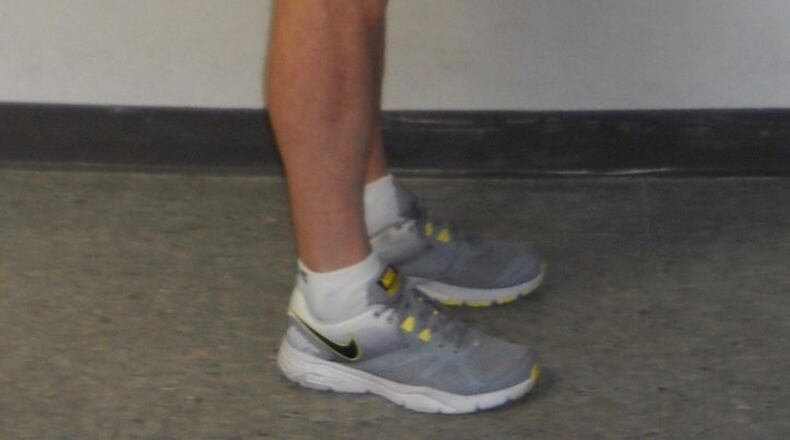TECHNIQUE
Grasp dumbbells and hold them at arm’s length in front of the thighs or at your sides. It is critical to avoid rounding the back, instead, you must be able to maintain a slight arch in the lower back throughout the repetition. If this is not possible, do not attempt until a greater degree of flexibility and/or strength of the lower back is achieved.
Slowly bend forward with the spine kept in position described, rear end out, the knees slightly bent, as shown in photo 2. In a completely stiff-legged deadlift, there is no bend at the knees, but this requires great hamstring flexibility and a strong low back. For this reason, bending the knees slightly is acceptable for most people.
Slowly stand, squeezing the glutes and holding the back in proper position, until in a completely upright position. The major workload falls on the larger muscles (gluteus maximus and hamstrings), while the back muscles are utilized as stabilizers, contracting isometrically to hold the spine in place.
It cannot be emphasized enough that the back must not be rounded. Lifting even light weights from a forward bend to an upright position without the necessary flexibility and strength to allow for proper alignment of the spinal column can strain the erector spine muscles and ligaments, with forces doubled or tripled very quickly.
Do not try to exceed a comfortable range of motion. Move slowly enough so that you can focus on proper back positioning, and do not make the mistake of trying to increase range of motion by standing on an elevated surface. Extreme range of motion inevitably results in a rounded back, and does not create greater strength because the majority of the weight load ends up falling on the ligaments. If your primary objective is to increase range of motion rather than increase strength, work on forward bending without added resistance and monitor your progress over time as to how far you can go with the low back slightly arched, rear end out. For some people, it is possible to forward bend with the legs completely straight and spine arched, to the point where the torso is parallel to the floor, however, it is not necessary to have this degree of flexibility for the majority of sports, everyday tasks and activities.
As always, if you are unfamiliar with strengthening exercises, or have a medical condition or injury, consult with your doctor before beginning a fitness program. Most exercises can be modified to accommodate varying conditions so that you can still achieve a stronger, healthier body.
About the Author
